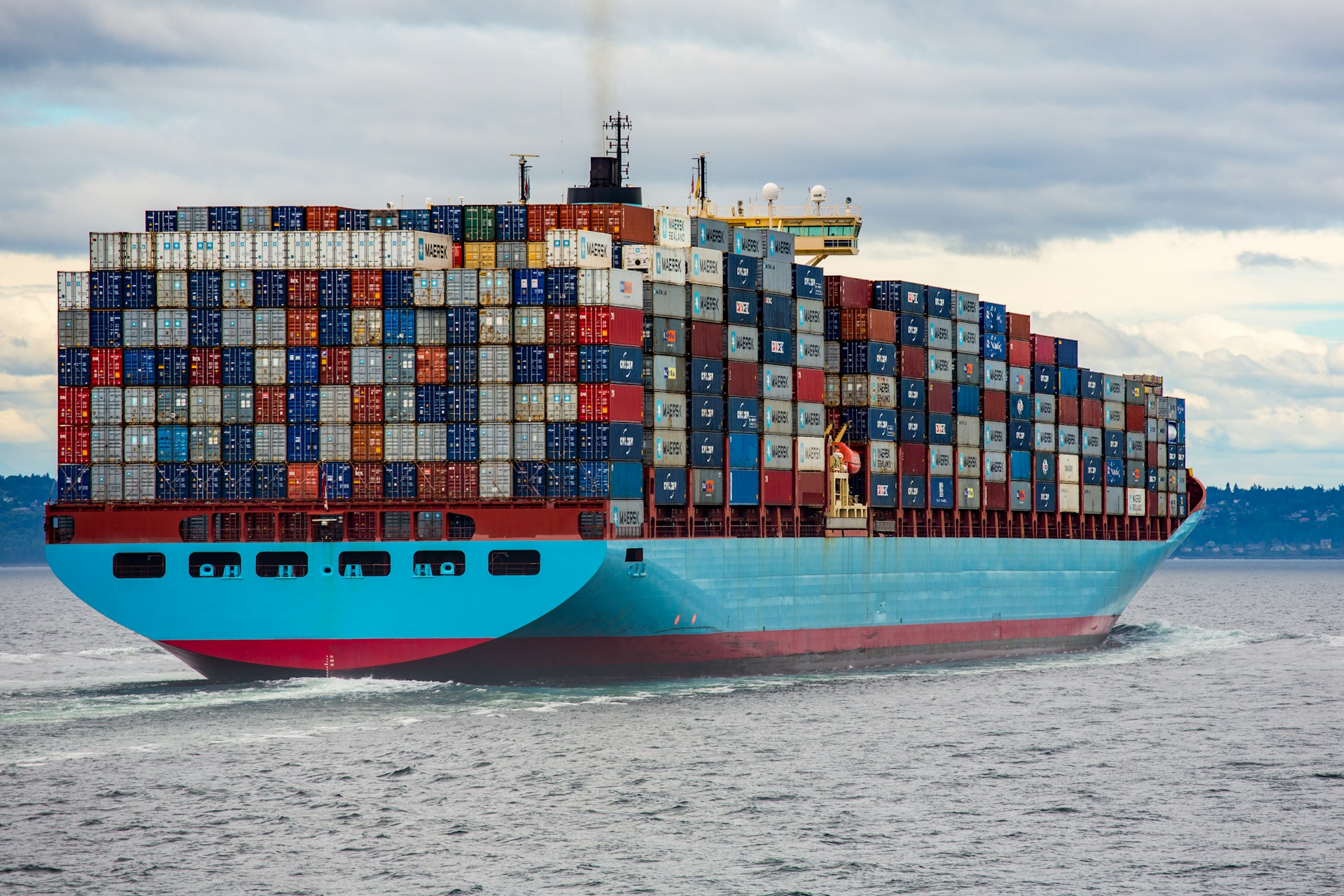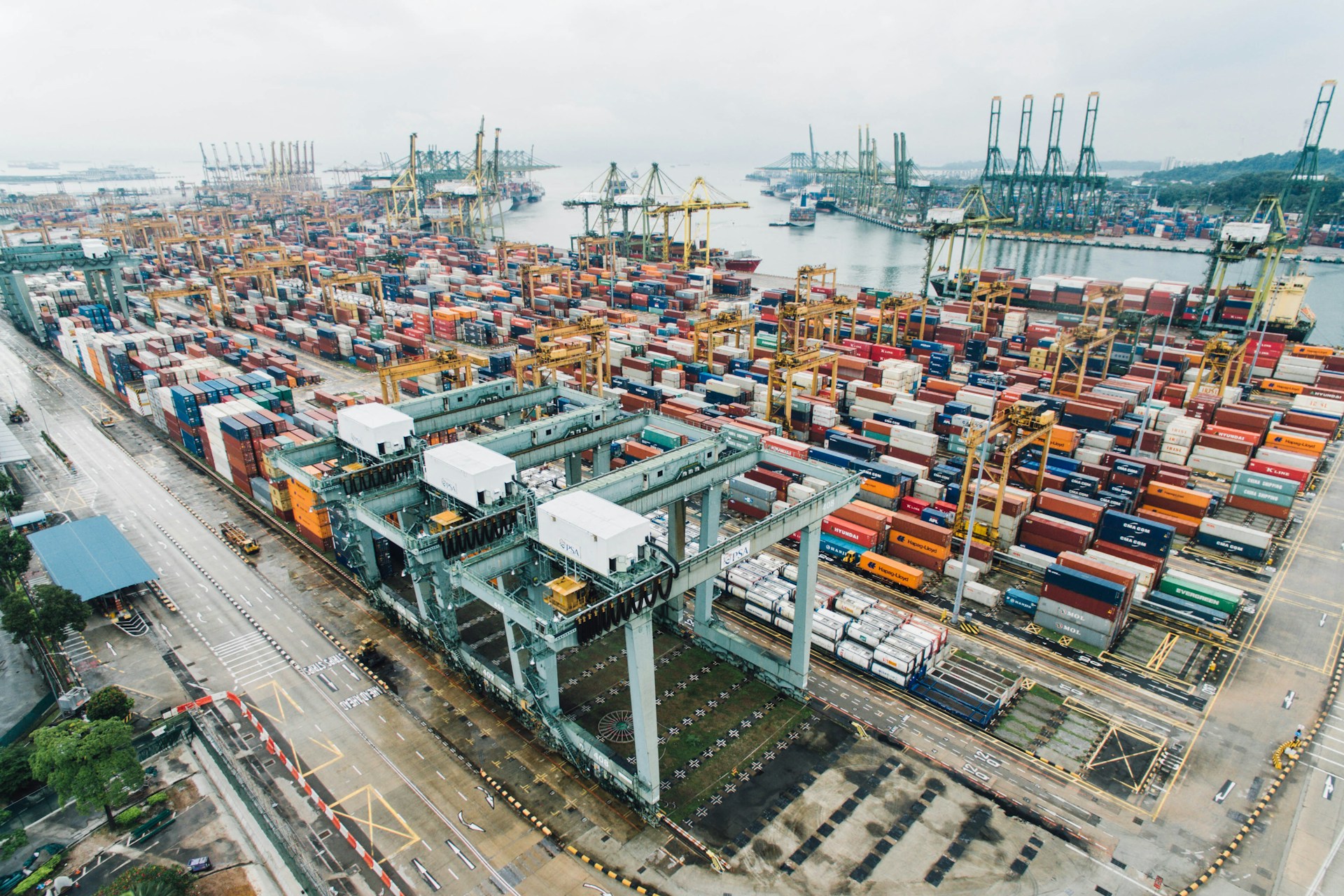In today’s global economy, the effectiveness of shipping management can significantly impact an organization’s bottom line.
It is an all-encompassing venture dealing with numerous issues ranging from regulatory compliance to operational efficiency.
Companies across various sectors face a myriad of challenges in this arena.
Despite its complexity, grappling with such issues is essential to prevent disruption in the supply chain.
This article aims to shed light on these trials and extend practical solutions to meet them head-on.
Easing these complexities can indeed propel businesses towards success in an increasingly competitive market.
Contents
- Challenges In Shipping Management & How To Solve Them
- 1. Challenge: High fuel costs. Solution: Adopt efficient routing
- 2. Challenge: Supply chain delays. Solution: Use real-time tracking
- 3. Challenge: Security threats. Solution: Implement stringent security measures
- 4. Challenge: Regulatory Compliance. Solution: Stay Updated on Regulations
- 5. Challenge: Environmental Sustainability. Solution: Use eco-friendly practices
- 6. Challenge: Equipment Breakdowns. Solution: Regular Maintenance Checks
- 7. Challenge: Overcapacity issue. Solution: Effective demand forecasting
- The Bottom Line
Challenges In Shipping Management & How To Solve Them
1. Challenge: High fuel costs. Solution: Adopt efficient routing
Operating costs in the shipping industry are steadily rising, with fuel costs being one of the significant contributors.
High fuel costs are a significant challenge for shipping companies,
as it directly influences the profitability and competitiveness of their operations.
Given the volatile nature of fuel prices, shipping companies often struggle to manage their expenditures.
Inefficient routing often escalates these costs further,
sometimes necessitating companies to pass the additional costs on to the consumers,
which can adversely impact the company’s market share and customer satisfaction.
Therefore, adopting efficient routing strategies is a critical solution to mitigate high fuel costs in the shipping industry.
A more efficient routing strategy significantly reduces the distance travelled by the vessels,
thereby lowering the fuel consumption and, consequently, the fuel costs.
Technological advancements can aid in this scenario,
as software solutions are available now that can provide optimal routes for shipping considering various factors such as weather, sea currents, and piracy incidents.
Implementation of such a solution, however, requires an initial investment,
but the benefits, in the long run, outweigh the initial costs by a significant margin.
Companies can also consider training their onboard staff regarding the importance of efficient routing,
as well as the correct usage of software-based routing tools.
Such measures will not only reduce fuel costs but also improve the overall operational efficiency of the shipping companies.
2. Challenge: Supply chain delays. Solution: Use real-time tracking
Every industry professional knows that efficient operations are key to a successful shipping business.
However, shipping companies often face one major obstacle in ensuring these operations – supply chain delays.
These delays can cause significant disruptions in the flow of goods, leading to increased costs, bottleneck situations, and customer dissatisfaction.
Yet, in the modern world, with the advancement of technology and digital transformation of industries, tackling these supply chain challenges has become all the more manageable.
One such effective solution to this problem is the use of real-time tracking.
Real-time tracking essentially involves using sophisticated technologies like GPS and RFID to monitor and track the location of goods during transport.
It provides transparency in the supply chain processes, ensuring that managers and customers are constantly updated about the status of their shipments.
This not only helps in efficient management and coordination of shipments but also in making quick decisions in case of unexpected situations.
For instance, if a shipment is delayed at a certain point, the management can act promptly, thus reducing the impact of that delay.
Moreover, real-time tracking also has a significant impact on inventory management.
By knowing the exact location and time of arrival of shipments, companies can better manage their inventory, thus reducing holding and storage costs.
It can also help companies in identifying any recurrent delays in their supply chain processes.
With the data collected through real-time tracking, companies can do a root cause analysis of these delays, enabling them to take corrective actions and improve their operations.
Therefore, in the quest to minimize supply chain delays, real-time tracking comes as a knight in shining armor for shipping companies.
Though adopting such a system may require investment and resources, the benefits it brings in terms of efficient operation, cost saving, and enhanced customer satisfaction make it a worthwhile step.
So, in this era of digitalization and instantaneous communication, employing real-time tracking in supply chain processes is not just an add-on, but a necessity for shipping companies wanting to stay at the top of their game.
3. Challenge: Security threats. Solution: Implement stringent security measures
In today’s interconnected world, security threats pose a significant challenge to shipping management.
These threats can arise in various forms, from cyberattacks on important data systems to physical threats such as piracy and theft.
Effective management of these security issues is key to ensure smooth operations and maintain clients’ trust.
Left unattended, such threats can cause significant disruptions to a company’s operation, leading to costly delays and potential reputational damage.
Therefore, one of the best solutions to counter these security threats is to implement stringent security measures.
These security measures should not only be reactive, responding to incidents after they have happened, but should also be proactive, detecting potential threats before they cause any harm.
For example, in the case of cyber threats, regular system audits, updating software, and strict access controls can significantly decrease the likelihood of data breaches.
In the case of physical threats like piracy or theft, security measures could include strengthening physical security parameters at high-risk ports or deploying security personnel.
Moreover, the use of technology, such as GPS tracking and CCTV cameras, can offer real-time monitoring capabilities that act as a deterrent and can assist with rapid response when incidents occur.
Implementation of stringent security measures also communicates to all internal and external stakeholders that the company takes the security of its operations seriously.
By taking such steps, shipping companies can significantly reduce the occurrence of security threats and their overall impact.
In addition to these measures, companies should also consider investing in comprehensive insurance to mitigate the financial risks associated with various security threats.
On top of this, regular training for all employees on security protocols and emergency procedures is crucial.
Continuous review of the security measures in place is also critical, as security threats are continually changing and evolving.
It’s important to remember that effective security measures are not a one-time solution but require ongoing attention and adjustments based on the current threat landscape.
In the end, while security threats will always be a concern in shipping management, with the right measures in place, their impact can be significantly reduced.
4. Challenge: Regulatory Compliance. Solution: Stay Updated on Regulations
One of the most significant hurdles in shipping management is regulatory compliance.
The complex web of domestic and international laws governing trade and transport is incredibly challenging to navigate.
Changes in these regulations are often frequent and sudden, leaving associated parties scrambling to adapt their operations.
Failure to abide by these rules can result in heavy penalties, fines, and damaged reputations.
Therefore, regulatory compliance is not just about avoiding penalties, but also about maintaining a company’s standing within the global trade community.
Staying updated on regulations is the key solution to prevent non-compliance and potential disruptions to business operations.
Considering the ever-changing nature of trade regulations, one must devise a strategy for keeping up with these adjustments.
One effective method is to assign a dedicated team or individual to monitor changes in laws and policies regularly.
Software solutions that offer real-time updates on changes in trade regulations can also be instrumental in addressing this challenge.
Apart from simply monitoring changes, understanding the impact of these changes on your operations is also crucial.
This is why firms often conduct impact assessments whenever significant regulatory shifts occur.
Moreover, these assessments should also include a plan of action for adapting your operations to the new regulations.
Regular training and awareness programs for staff can ensure that everyone in the organization is on the same page regarding regulatory compliance.
After all, ensuring that all employees are aware of changes in regulation is key to overall compliance.
Finally, while daunting, regulatory compliance is an essential aspect of shipping management that simply cannot be ignored.
Staying updated on regulations and working towards full compliance will eventually become one of your company’s greatest strengths.
5. Challenge: Environmental Sustainability. Solution: Use eco-friendly practices
Shipping management is often faced with the challenge of balancing between profitability and environmental sustainability.
As the shipping industry continues to expand, so does its carbon footprint, which is a cause for major concern among environmental scientists and regulation authorities.
Environmental sustainability goes beyond merely reducing emissions, but also encompasses preservation of marine life, reducing noise pollution, and effectively managing waste.
Many shipping companies struggle with incorporating these eco-friendly practices due to cost implications and absence of mandatory regulations.
However, the increasing demands from customers, stakeholders, and regulatory bodies for environmentally responsible operations necessitate a shift towards more sustainable practices.
One way that shipping companies can promote environmental sustainability is through fuel efficient operations.
This could involve adopting advanced technologies that allow for efficiency in routing, thus reducing fuel consumption, and consequently the carbon footprint.
Additionally, they could invest in modern vessels with better fuel efficiency or retrofit their existing fleet with efficient engines to reduce fuel consumption, and in turn, emissions.
Another effective solution lies in clean energy sources like wind, hydrogen, or battery power.
While these may present a significant initial investment, the long-term benefits in terms of reduced emissions and operational costs can’t be overlooked.
Waste management is also a crucial part of environmental sustainability within shipping management.
Careful attention should be given to the disposal of all types of waste originating from ships as improper disposal can cause harm to marine life.
Through adopting stringent waste management procedures and investing in waste management systems, shipping companies can minimize their environmental impact.
Overall, it is evident that environmental sustainability presents a significant challenge to shipping management.
However, by leveraging advanced technology and adopting eco-friendly practices, the shipping industry has the potential to lessen its environmental impact and contribute to the goal of global sustainability.
6. Challenge: Equipment Breakdowns. Solution: Regular Maintenance Checks
In the realm of shipping management, a common and potentially catastrophic challenge is that of equipment breakdowns.
In such an industry, the consistent working order of machinery, software, and vehicles is critical to the timely and efficient delivery of goods and services.
When these essential pieces of equipment fail, the results can be dire — resulting in delays, added costs, and in some cases, even the loss of goods.
In an age where customers expect quick and efficient service, such setbacks can be devastating to a company’s reputation.
As a result, this challenge needs to be addressed proactively instead of reactively — that is to say, steps need to be taken to prevent equipment breakdowns before they occur, rather than only dealing with them as they arise.
How is this achieved?
The most effective solution is regular maintenance checks.
These checks, performed consistently and thoroughly, can identify potential issues before they become larger problems — enabling them to be dealt with promptly and minimising disruption to services.
Regular maintenance checks, performed consistently and thoroughly, can identify potential issues before they become larger problems – enabling them to be dealt with promptly and minimising disruption to services.
Maintenance checks are more than just a safety measure; they are an investment into the longevity and sustainability of a company’s operations.
By identifying and rectifying potential problems early, they can significantly reduce the risk of costly breakdowns and delays in the future.
It’s not just about checking for physical deterioration or faults, either.
As technology continues to evolve, staying on top of software updates and advancements is also an important part of maintenance.
It’s also worth noting that all staff should be trained in the importance of regular maintenance and the role they play in it.
This ensures a company-wide understanding and commitment to equipment care.
This approach of preemptive care is particularly important in an industry like shipping, where equipment often faces strenuous and frequent use.
Investing in high-quality, durable equipment in the first place can also help stave off breakdowns.
This, combined with regular maintenance, can help ensure your equipment lasts longer and performs better.
Consider working with a maintenance service provider if you lack the internal expertise or resources for regular maintenance.
These providers often have the skills and knowledge to identify issues that may be overlooked in-house.
In summary, proactive, regular maintenance checks are the key to reducing the risk of equipment breakdowns in the shipping industry.
They can detect issues early, extend the lifespan of equipment, and ultimately, save time and money.
Thus, in the face of the daunting challenge of equipment breakdowns, the solution may be as straightforward and effective as committing to regular, thorough maintenance checks.
7. Challenge: Overcapacity issue. Solution: Effective demand forecasting
In the modern era of shipping management, one common challenge that emerges is overcapacity.
Overcapacity refers to the situation where the supply of vessels exceeds the demand for their services.
This mechanism creates a surplus, which can lead to a decrease in freight rates and potentially disrupt the equilibrium of the shipping market.
Overcapacity is an issue that should not be taken lightly as it has significant financial implications.
In addition, it could result in underutilization of vessels, causing a high amount of idle resources, further compounding financial strain.
This problem is further magnified in larger shipping companies that have extensive fleets at their disposal.
Dealing with overcapacity requires a delicate balance of managing resources, planning, and understanding market trends.
The suggested solution to combat the overcapacity issue in shipping management is through effective demand forecasting.
Demand forecasting is the process of predicting the future demand for shipping services.
This prediction allows for more informed decision making when it comes to procurement, scheduling, and other operational aspects of shipping.
By employing demand forecasting, companies can adjust their capacity in line with the predicted demand, thus minimizing the chance of overcapacity occurring.
Furthermore, it provides a platform for businesses to make strategic decisions about expansion, investments, and risk management.
Efficient demand forecasting involves a combination of accurate data gathering, advanced predictive analytics, and a detailed understanding of the global shipping market environment.
However, it is important to note that demand forecasting isn’t a one-size-fits-all solution.
Different shipping companies operate in different markets, with varying factors affecting the demand.
Hence, a bespoke strategy that caters to their specific needs and business environment is necessary.
Moreover, continuous monitoring and adjusting of strategies are required, as market conditions and global demand can change rapidly.
In a nutshell, overcoming the overcapacity issue is a critical aspect of shipping management, and through effective demand forecasting, companies can find a way to turn this challenge into an opportunity.
The Bottom Line
Reliable solutions to prevalent challenges in logistics and supply chain management can significantly mitigate operational hurdles.
Efficient routing can help overcome high fuel costs while real-time tracking assists in averting supply chain delays.
Resilience against security threats is achievable through implementing stringent security measures and compliance with regulatory changes can be maintained by staying abreast with the recent amendments.
Sustainable and eco-friendly practices can act as an invaluable approach towards environmental sustainability.
Regular maintenance checks can prevent frequent equipment breakdowns and demand forecasting serves as an answer for overcapacity issues.
Thus, by implementing these solutions in a calculated manner, logistics companies substantially enhance their efficiency and productivity while simultaneously minimizing their operational costs.




